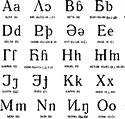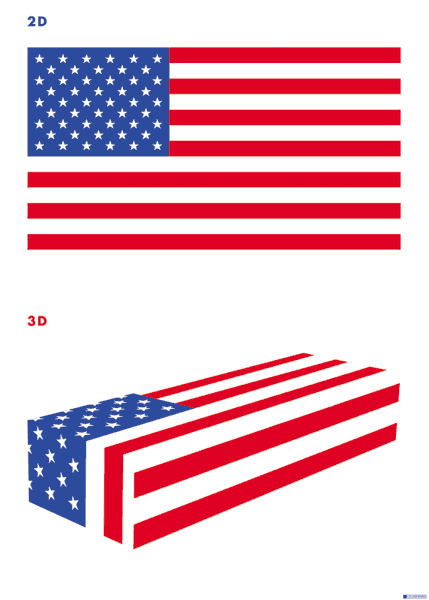nationalism
Hearts and Minds
“[Dr. Chalmers] testified that the Klan had four basic components. One is what he called ‘one hundred percent Americanism.’ The Klan is as old as apple pie in the United States, and has always been what they called in the old days a ‘native American party.’ I’m not speaking of Native Americans as we ordinarily think of them… Their notion was that no one but whites from Northern Europe should be here on these shores. The Klan is a continuation of that ideology.
A second component is moral conformity, which I spoke of earlier. Third, the notion of fraternity, of brotherhood. And finally, and most important to us at any rate, is the notion of violent action. They do something about the problems.
Most of the rank-and-file Klansmen, at least the ones I encountered in Chattanooga, were poor, uneducated, working-class whites. And the Klan gave them something to be proud of; it gave them a perspective, a purpose. And that’s the attraction the Klan has for white working-class America. And unless you all can develop some other method, or some other means of expression, you won’t be able to defeat the Klan.”
“The motivation for people to join violent extremist groups in Syria and Iraq remains more personal than political… [ISIS propaganda] appeals to those who seek a new beginning rather than revenge for past acts. A search for belonging, purpose, adventure, and friendship, appear to remain the main reasons for people to join the Islamic State.…
Our results suggest that it is not so much the lack of material resources that is important for terrorism but rather the lack of economic opportunities: Countries that restrict economic freedom experience more terrorism.… While unemployment on its own does not impact radicalization, unemployment… leads to a greater probability of radicalization.…
The validation of the influence of friendship in motivating individuals to become [foreign terrorist fighters] supports the ‘bunch of guys’ theory of terrorism put forward by the psychologist Marc Sageman, who argues that the decision to join a terrorist group ‘was based on pre–existing friendship’ ties and ‘that the evolving group of future perpetrators seemed more akin to’ such networks ‘than a formal terrorist cell, with well–defined hierarchy and division of labour.’ This theory has led some observers to call for a ‘social network approach to terrorism’”
On becoming MS13 in the Americas (2018) (via)
“The MS13 is a social organization first, and a criminal organization second. The MS13 is a complex phenomenon. The gang is not about generating revenue as much as it is about creating a collective identity that is constructed and reinforced by shared, often criminal experiences, especially acts of violence and expressions of social control. The MS13 draws on a mythic notion of community, a team concept, and an ideology based on its bloody fight with its chief rival, the Barrio 18 (18th Street) gang, to sustain a huge, loosely organized social and criminal organization.…
In conversations, gang members make clear that it is centered on the notion of community, which they loosely refer to as ‘el barrio.’
El barrio encompasses the best and the worst of the gang, an expression of its bipolar personality that is the defining characteristic of this group. El barrio is a physical space. It has borders, and the gang marks those borders with graffiti and other public symbols. It posts its members at the edges of these borders to ensure others do not encroach on its space, and members protect this space with their lives, if necessary. It draws revenue from this territory and, in some cases, builds social and political ties with its residents, even while it is victimizing them.
But el barrio is also psychological. What seems to bind all these groups is that they are looking for a sense of place: a space where they can get protection and nurturing - both positive and negative; a space where others are supportive of one another; a space it can call its own, henceforth its near constant references and symbols that beckon the homeland. That space is what they call el barrio.”
Update, August 22, 2021: this Twitter thread from a former Islamist echoes this theme as well.
The t-shirts originally read ‘hardcore rebels’ and sported a skull and nationalist flags. However, once the garment had been washed, the shirt revealed a new message that offered to help far-right extremists break away from the neo-Nazi scene. The message reads: ‘If your t-shirt can do it, you can do it too — we’ll help you get away from right-wing extremism.’”

Duping your target audience seems like a good way to alienate them. But it’s certainly a memorable action, is generating a bit of buzz, and I suspect will reach many more in the re-telling.
Bernd Wagner, the founder of Exit-Germany, the anti-racism organization behind the shirts, comments at The Guardian.
Native Signs

Signs in Bemidji, Minnesota used to read “No Indians Allowed.” Now local businesses increasingly announce their facilities in both English and Ojibwe.
Racism and social exclusion have a long history in the town, but as Tanya Lee writes, a 2005 proposal to voluntarily incorporate Ojibwe words on public signage is having a growing impact:
The idea came in part from Hawaii, where [Michael] Meuers had lived for a year in the 1960s. On the islands, he recalled, native language and culture are a part of everyday life for everyone, as the familiarity with words such as mahalo, luau, aloha, lei and hula prove. On restroom doors, the words men and women are displayed in English and in Hawaiian.
In 2005, a student at Red Lake High School, a school for Red Lake students run by the state of Minnesota, opened fire on the campus with a shotgun and a semiautomatic pistol, killing seven.
“The next day, I was talking to the city manager and noticed a Red Lake flag on a shelf,” Meuers said. “I was working for the tribe at that point and I suggested the city fly the flag. The Red Lake flag flew at half-staff outside City Hall for a week. I never heard so many positive comments about Bemidji. It was the people of the city saying, ‘Bemidji is crying for the Red Lake babies too.’ ”
This prompted Meuers to take his simple idea about the bathroom signs to Shared Visions, a community organization dedicated to addressing the issues of racial disparity and bias. Rachelle Houle served with Meuers on the Cultural Understanding and Respect Committee, and together they set the goal of placing restroom signs in both Ojibwe and English in 20 businesses within a year. Meuers volunteered to pay for the signs.…
“Michael and I both feel a change happening here,” Houle said. “For so long, the Ojibwe culture and people have not been respected here. This is a way of saying, ‘You are valuable.’ It’s a way of showing respect and making people welcome in Bemidji.”…
[Dr. Anton Treuer, professor of Ojibwe at Bemidji State University] says the university has received many calls and e-mails about how to replicate the [universty’s signage] program, and he believes it can serve as a template for other tribes. “We were taking our signs around town when we started,” Meuers said, “and now people are coming to us, not only from the U.S. but also from Canada.”
Type and Nation, 6
In the introduction to Seeing Like a State: How Certain Schemes to Imporve the Human Condition Have Failed, James C. Scott writes:
Originally, I set out to understand why the state has always seemed to be the enemy of “people who move around,” to put it crudely. In the context of Southeast Asia, this promised to be a fruitful way of addressing the perennial tensions between mobile, slash-and-burn hill peoples on one hand and wet-rice, valley kingdoms on the other. The question, however, transcended regional geography. Nomads and pastoralists (such as Berbers and Bedouins), hunter-gatherers, Gypsies, vagrants, homeless people, itinerants, runaway slaves, and serfs have always been a thorn in the side of states. Efforts to permanently settle these mobile peoples (sedentarization) seemed to be a perennial state project—perennial, in part, because it so seldom succeeded.
The more I examined these efforts at sedentarization, the more I came to see them as a state’s attempt to make a society legible, to arrange the population in ways that simplified the classic state functions of taxation, conscription, and prevention of rebellion. Having begun to think in these terms, I began to see legibility as a central problem in statecraft. The premodern state was, in many crucial respects, partially blind; it knew precious little about its subjects, their wealth, their landholdings and yields, their location, their very identity. It lacked anything like a detailed “map” of its terrain and its people. It lacked, for the most part, a measure, a metric, that would allow it to “translate” what it knew into a common standard necessary for a synoptic view. As a result, its interventions were often crude and self-defeating.
It is at this point that the detour began. How did the state gradually get a handle on its subjects and their environment? Suddenly, processes as disparate as the creation of permanent last names, the standardization of weights and measures, the establishment of cadastral surveys and population registers, the invention of freehold tenure, the standardization of language and legal discourse, the design of cities, and the organization of transportation seemed comprehensible as attempts at legibility and simplification. In each case, officials took exceptionally complex, illegible, and local social practices, such as land tenure customs or naming customs, and created a standard grid whereby it could be centrally recorded and monitored.
Standarization of script seems to fit right in line with this. Not just under the pretense of forging national identity, citizen-ship, encouraging citizens to read and participate in the State, but enabling the State to read its citizens.
Type and Nation, 5

Via Language Log I found this bit on Another battle of the alphabets shaping up in Central Asia:
“A statement by a Kazakhstan minister that his country will eventually shift from a Cyrillic-based alphabet to a Latin-based script and reports that some scholars in Dushanbe are considering dropping another four Russian letters from the Tajik alphabet suggest that a new battle of the alphabets may again be shaping up in Central Asia.
Russian commentators have reacted by suggesting that this is yet another effort by nationalists in those countries to reduce the role of the Russian language and hence of the influence of Russian culture, but in fact the controversy over any such change is far more complicated than that.”
Not a new story, Kazakhstan conducted a feasibility study on the switch back in 2007, but it seems to be gaining momentum. And not just a matter of international geopolitics either — Kazakhstan has a sizable Russian population in the north, a source of tension within the country.
While Cyrillic is the official script of Kazakhstan, the Latin alphabet is already used by the Kazakh diaspora in Turkey, Western Europe and the US, while Kazakhs in China use a modified Arabic alphabet. There’s more on Kazakh alphabets on Wikipedia and more on typography and nationalism here.
Related: see his fascinating post on the invasion of China and Taiwan by the roman letter Q.
Type and Nation, 4
 After 50 years of the US Government’s forced assimilation policy, the native Lushootseed language was near extinction. Without a written tradition, by the 1960’s the history of the culture had all but vanished. Only five tribal elders were known to be fluent in the language. A preservation effort was mounted to record stories and create a phonetic alphabet. In December 2008, the Tulalip Tribes Lushootseed Department commissioned Juliet Shen to design a complete font solely for Lushootseed. Their mission is to restore Lushootseed to everyday use. Read more.
After 50 years of the US Government’s forced assimilation policy, the native Lushootseed language was near extinction. Without a written tradition, by the 1960’s the history of the culture had all but vanished. Only five tribal elders were known to be fluent in the language. A preservation effort was mounted to record stories and create a phonetic alphabet. In December 2008, the Tulalip Tribes Lushootseed Department commissioned Juliet Shen to design a complete font solely for Lushootseed. Their mission is to restore Lushootseed to everyday use. Read more.Flagged

Lex Drewinski, 2D/3D, silkscreen, 2006.

